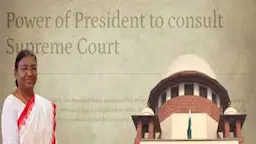In an enlightening conversation Arun Prakash, Founder and CEO of GUVI, an Ed-Tech platform, explored how bridging linguistic and technological gaps through vernacular education transforms tech learning with Education Post’s Prabhav Anand. GUVI’s innovative coding courses in multiple Indian languages highlight the importance of experiential learning and industry collaboration, showcasing a vision of inclusivity and empowerment in tech education.
Q. Can you share the story behind founding GUVI, and what inspired you to create an ed-tech platform focused on vernacular languages? Additionally, how did your personal experiences shape GUVI’s mission and vision?

The story of GUVI is closely associated with my own story, which began in a tight-knit town near Madurai in Tamil Nadu. I completed my entire scholastic journey near Madurai itself. For a long time, linguistic barriers were defining obstacles for the youth in the state. Time did little to overcome this challenge, which I witnessed firsthand during a short visit to my alma mater, a tier-2 engineering college in Madurai.
The most prevalent challenges the students faced included minimal industry skills and technology exposure. It was far from being a separate issue, as my experience of being associated with the tech industry showed me the scenario was similar on the national scale, across Indian tier-2 and tier-3 cities. This led me to address this challenge personally with a simple yet profound idea: bridging the technological and industry skills gap through social media. Mrs. Sri Devi, my late wife, and some associates extended their unconditional assistance, quickly expanding our reach to over INR 10 lakhs, with the majority of our users based in the USA and the UK. The underlying problem became clearer, and our subsequent actions led us to establish GUVI.
We approached Mr. Ashok Jhunjhunwala at IIT Madras to become incubated by the university in 2014. Both my wife and I were employed at PayPal at the time. With the initiation of GUVI, we adopted a twopronged approach — my wife resigned to launch the company and furnish it with a corporate outlook, while I continued in my role to provide funding. Planning, originality and hard work bore fruits soon enough, and we were able to scale GUVI successfully to its present status.
Q. GUVI offers coding courses in multiple Indian languages. How do you ensure the quality and consistency of content across different languages, and what challenges did you face while developing these courses in vernacular languages?
The differentiating factors between GUVI and its peers are our state-of-the-art quality and unwavering consistency that make up our core concerns. Additionally, a significant challenge we face when extending our services to a new vernacular language is the linguistic complexity. To address these challenges, we have established an internal audit team, who are tasked with translating and maintaining scholastic and informational accuracy. Additionally, we employ the expertise of seasoned industry luminaries from various sectors who validate concerns like content accuracy and integrate trending industry skills within the curricula to ensure a multipronged approach to maintain unsurpassed quality.
Q. How do you select industry mentors for your startup, and what role do they play in shaping the curriculum? Can you also share some success stories of learners who have benefited from these mentored courses?
We maintain a stark belief in capabilities rather than conventional degrees. This is replicated in our approach to this challenge as well, as we employ seasoned industry professionals with years of experience in technology. They may not have been associated with academics, but offer years of invaluable insights from working firsthand in the industry in core segments like Data Science, Machine Learning, etc. These experts are a critical part of our strategy to offer premier industry experience to our learners. These subject matter experts focus on mentoring our young learners through customized learning strategies and industry knowledge. This unique strategy has helped GUVI to reach more than 30 lakh students since 2014.
For example, we had Pratyaksh, a former learner from our Zen Classes. He joined us during his engineering degree and wanted to become a Full-Stack Development professional. This was during the pandemic, and at that time, conventional education came to a standstill all around the world. Here, we provided him with a platform to learn valuable technologies and, after his course, several job opportunities. He is presently working as an Associate Software Engineer at a prominent firm named JusPay. Our Zen Class program is led by highly experienced mentors who are directly part of the larger tech industry, and like Pratyaksh, numerous young learners have been able to productively learn from them.
Q. CodeKata is a unique feature of GUVI. How does it enhance learners’ coding skills, and what sets it apart from other coding practice platforms? Additionally, how do you ensure that CodeKata problems remain relevant and challenging for learners?
GUVI integrates advanced features into our curricula, with CodeKata being a key highlight. It is a coding practice platform that offers students an opportunity to practice coding through IDE software. It has been designed by several IT & software industry veterans to host coding challenges provided by industry leaders like Microsoft, Walmart, Samsung and others. The learners’ progress in CodeKata is closely monitored by our internal team members. Profiles of students who deliver exceptional output are recommended by our team to top companies seeking to hire outstanding talents for their respective workforce. Codekata’s effectiveness has also garnered widespread recognition from Indian and global companies. Its quality is also closely monitored by an internal developer team periodically to maintain its challenge and ensure it demonstrates the best industry practices.
Q. What are the expansion plans beyond India? Are there plans to offer courses in other regional languages, and how do you envision GUVI’s role in bridging the digital divide and promoting tech education in underserved areas?**
In addition to urban India, our vernacular approach has received widespread acclamation in tier2 and tier-3 cities. GUVI’s courses presently benefit young students belonging to numerous linguistic communities from at least 18 Indian states and UTs. This paradigm-shifting response has led us to explore expansion plans for several other linguistic communities in India and abroad. Our team has identified key markets across Africa, the Middle East, Southeast Asia and South America — where the mutual factor is the prevalence of technological gaps based on discursive barriers. We are currently in the developing stage to strategically roll out innovative modules in these markets expeditiously.

Q. The startup has a strong community of learners. How do you foster engagement and interaction among learners, and are there any plans for meetups, hackathons, or collaborative projects?
Proactive engagement is critical to ensure favorable outcomes in tech education. For learners from tier-2 and tier-3 Indian cities, opportunities to interact with industry professionals are severely limited. To address this challenge, we have adopted a bifurcated strategy, the first of which entails deploying a dedicated community management team. This team of experts fosters a meaningful and interactive engagement with our learners, including both alumni and prospective students. We have also identified the critical requirement of Indian women to join the workforce, which has led our team of experts to initiate an extensive outreach program targeting prospective female learners through campus engagement and digital programs. This team conducts periodic events, both online and offline. For example, it organized an upskilling event - ‘AI-for-Women’ for free during International Women’s Week in 2023, where more than 30,000 women became beneficiaries. Productive collaborations like hackathons are also explored frequently, with the help of premier educational institutions such as IIT-M, IIT-A and Anna University.
The second approach can be described as more of a personal engagement. I have decided to continue my skills in the social media domain that led us to establish GUVI, and through this, I focus on offering my tech experience to prospective learners through informative videos. This also helps me to identify students’ dynamics, and new technological education gaps while ensuring an interactive engagement with millions of students domestically and abroad.

















